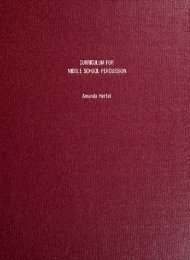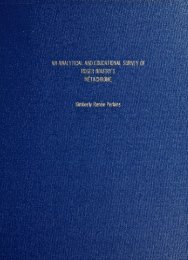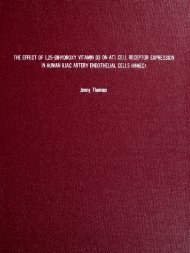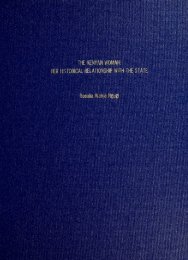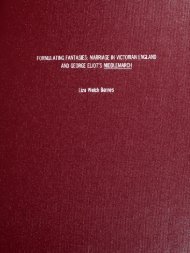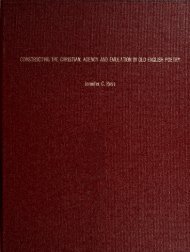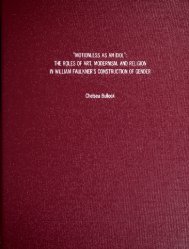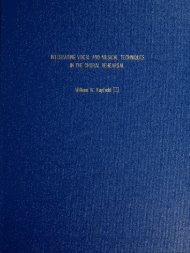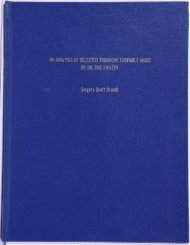An Analytical and Educational Survey of Howard Hanson's Dies ...
An Analytical and Educational Survey of Howard Hanson's Dies ...
An Analytical and Educational Survey of Howard Hanson's Dies ...
- No tags were found...
You also want an ePaper? Increase the reach of your titles
YUMPU automatically turns print PDFs into web optimized ePapers that Google loves.
13Compositional StyleHanson is widely regarded as a 20 thcentury Romantic composer. This observationis quite true, for while he experimented in his early compositional years with microtonalmusic, Hanson directed his writing away from the more disjunct style <strong>of</strong> contemporarycomposers <strong>and</strong> toward a more Romantic ideal. His compositional style was "loyal to theprinciples <strong>of</strong> tonality <strong>and</strong> uses dissonances to build climaxes" (Hansen, 1967, p. 343). Heused his own system <strong>of</strong> theory, explained in Harmonic Materials <strong>of</strong>Modern Music:Resources <strong>of</strong> the Tempered Scale. The central idea in the formulation <strong>of</strong> melody <strong>and</strong>harmony was intervallic relationships, that interval analysis <strong>and</strong> application could explain<strong>and</strong> organize tones. Hanson states:"[...] there are six types <strong>of</strong> interval relationship, if we consider such relationshipboth "up" <strong>and</strong> "down": the perfect fifth <strong>and</strong> its inversion, the perfect fourth; themajor third <strong>and</strong> its inversion, the minor sixth; the minor third <strong>and</strong> its inversion, themajor sixth; the major second <strong>and</strong> its inversion, the minor seventh; the minorsecond <strong>and</strong> its inversion, the major seventh; <strong>and</strong> the tritone, the augmented fourthor diminished fifth." (Hanson, 1960, p. 27)Projecting these intervals onto one another create scales or sonorities. The perfectfifth <strong>and</strong> minor second intervals, when projected, are the only intervals that include alltwelve tones <strong>of</strong> the chromatic scale. Hanson describes in detail the relationship <strong>of</strong>intervals projected by perfect fifths. Most relevant to this study is the perfect fifth heptad:-o--&--omi-©g-o-IEx. 1 : Perfect fifth heptad



